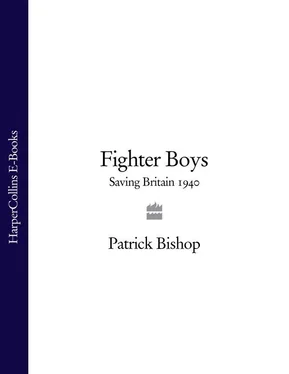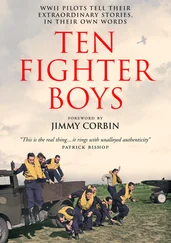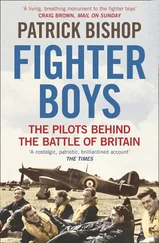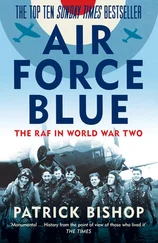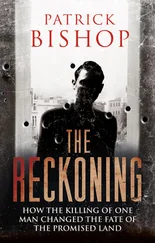Charles Fenwick was a little boy in the Kentish village of Harbledown when Sir Alan Cobham’s troupe of itinerant flyers passed through. His aunt took him to see them.
‘Would you like to go for a flip?’
What a stupendous question! I was on my way to the plane as fast as I could go. I was small for my age and flopped into the rear cockpit. The plane was an early Avro, an aerial marvel quite beautiful to behold. Well, my idea of beauty, all struts and wires and canvas with that intoxicating smell compounded from dope and fuel and hot oil. But to beat it all she was alive. She was roaring like a lion and rattling. I was heading for heaven. 4
Flying requires courage. Going solo in any aeroplane is alarming. Most aviators never lose a faint feeling of insecurity, no matter how great their experience. Flying with an instructor for the first time in a light aircraft, trainees noted queasily how thin the fuselage seemed, how flimsy the wings, how easy it might be to tip out in a turn. The sensations got more alarming as they progressed to more powerful machines. The Harvard trainer, whose 600-horsepower engine provides only half the thrust of the Merlins of the Hurricanes and Spitfires, is disconcerting enough. Clamping into a tight turn, the most basic manoeuvre of dog-fighting, G forces drag your guts to the sump of your stomach and press your head down on your chest as if you are being crushed by a giant hand. A simple half-roll sends the world spinning incomprehensibly, earth and sky alternating in a blur.
When I experienced this as a passenger, fear never felt far away. It is hard to imagine how pilots were able to fling their aeroplanes around in this way without succumbing to disorientation or panic. It is harder still to understand how they could shoot at, and hit, other aeroplanes while they were doing so. To have the reflexes and eyesight needed to do these things you had to be young. Most pilots were aged between nineteen and twenty-six. They tended to be young in their outlook as well. They liked the latest music, films and fashions and spiced their talk with Americanisms, creating a Hollywood-meets-public-school slang.
The Fighter Boys belonged firmly to contemporary Britain, ideal warriors in what was being shaped as a people’s war. To the public it seemed that their technological skill was, comfortingly, fused to old values and traditions. The pilots’ fathers had fought and died in a war that had traumatized Europe and stimulated a wave of pacifist, and then defeatist, feeling. Yet the sons were accepting their duty willingly, almost cheerfully, and confronting the horror again.
On that August night, as the blackout shutters were fitted into the leaded windows of the White Hart, as last orders were called and the banter and laughter subsided, unwelcome thoughts of tomorrow edged in. The fighting of the day had brought only an interim victory, one that would have to be won over and over again. No one present, airman or civilian, was now in any doubt that they were in the middle of a struggle which would determine whether or not Britain would survive as a free country. Winston Churchill had set the stakes even higher. The battle, he said, would decide the fate of the civilized world. Many elements were involved in determining the outcome. Chief among them was the skill, morale and courage of the Fighter Boys. It was an extraordinary responsibility. Not since classical times had such a tiny band of warriors been asked to bear such a heavy burden. It was the pilots, though, who seemed the least concerned as they finished the dregs from their pewter mugs and stepped out into the cool, hop-scented Kent night.
In the summer of 1940 the art of air fighting was only twenty-six years old. In that time, aeroplanes had moved from the extreme periphery to the centre of modern warfare. The invention of aircraft made air wars inevitable. Innovators moved with depressing speed to fit guns to flying machines. The air shows at Hendon, Brooklands and Rheims held before the First World War emphasized the potential destructive power of the thing they were celebrating, with aviators dropping flour bombs on the outlines of warships traced in chalk on the ground. Writers frightened readers with stories of airships bombarding cities, a prophecy whose accuracy was soon to be confirmed.
For the military, though, it was the information-gathering potential of aeroplanes that first attracted interest. The first aircraft were used as observation platforms. In the war game played in September 1912 at the annual British army manoeuvres, Red Force and Blue Force were each equipped with a supporting air component. Early on, two airborne officers from Blue Force spotted a concentration of opposition troops and correctly guessed their direction. The information helped their side to win.
The victorious commander, Lieutenant-General Sir James Grierson, drew an important conclusion from the exercise. ‘So long as hostile aircraft are hovering over one’s troops,’ he wrote, ‘all movements are likely to be seen and reported. Therefore the first step in war will be to get rid of hostile aircraft.’ 1
This was how combat in the air was to develop in the four years of the Great War. The essential role of aeroplanes was to lift the roof off the battlefield, allowing commanders to peer into the enemy’s territory, detecting his movements and trying to divine his intentions. At the same time, spotters hovering perilously over the front lines helped to direct the artillery barrages that occupied much of the effort of both sides.
The rival pilots, from the outset, tried to kill each other. One of the first recorded encounters took place on 25 August 1914. Lieutenant C. E. C. Rabagliati of the Royal Flying Corps was cruising with an observer on a reconnaissance mission over northern France when they came across a lone German aeroplane. Rabagliati’s aircraft was unarmed, but he had with him a .303 service rifle. The German carried a Mauser pistol, fitted with a wooden shoulder stock. The two machines approached each other and circled, coming within feet of colliding. Rabagliati fired a hundred rounds without success. Then, he reported afterwards, ‘to my intense joy, I saw the German pilot fall forward on his joystick and the machine tipped up and went down’. 2
Such encounters were to be repeated thousands of times in the following years. Technological advances, accelerated by the demands of warfare, meant that the aircraft became faster, more nimble and more sturdy, and the weapons they carried more deadly. But the purpose of aerial fighting remained the same. No bomber heavy enough to make a significant difference on the battlefield or in the rear had emerged by the end of the war. The main function of military flying remained observing the enemy, and trying to prevent the enemy from observing you.
These activities grew to be increasingly important as the war progressed. The RFC went to France with sixty-two aircraft. In April 1918 it became, together with the Navy’s air arm, a service in its own right, the Royal Air Force. It finished the war with 1,799 aeroplanes. This transformation was presided over by a particularly forceful and energetic commander, Hugh Trenchard. There were others who played a crucial part in the creation of a separate air force, but Trenchard’s passion made him stand out. He became known as ‘The Father of the RAF’, a label he claimed to detest. The designation had some truth in it, though. He loved the air force with the fierce love of a father; a Victorian father who would not flinch from sending his boy to his death if duty demanded it.
Trenchard combined nineteenth-century mores with a twentieth-century appreciation of the new. He was born on 3 February 1873 in the West Country, and had a difficult childhood. His sister died of diphtheria, his solicitor father was bankrupted and he failed several attempts to enter military schools before scraping a commission as a second-lieutenant in the Royal Scots Fusiliers and being posted to India. He spent the first decade of the new century in southern and western Africa. In October 1900 he was shot in the chest while trying to capture Boers and was expected to die. Trenchard, who ‘hated sick people’, pulled through, recovering in characteristic fashion by hurtling down the Cresta run at St Moritz.
Читать дальше
